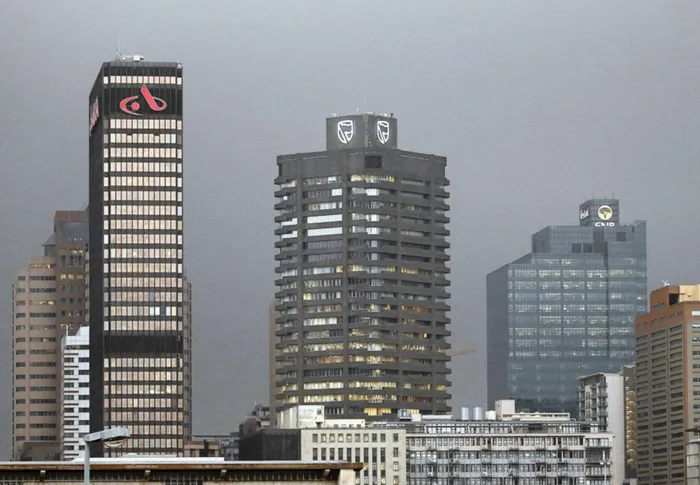2017 not so rosy for bank shares

The logos of three of South Africa's four biggest banks - Absa, Standard Bank and First National Bank - adorn buildings in Cape Town. Picture: Mike Hutchings The logos of three of South Africa's four biggest banks - Absa, Standard Bank and First National Bank - adorn buildings in Cape Town. Picture: Mike Hutchings
Johannesburg - South Africa was a bright spot for
banks on the continent in 2016, with stocks shrugging off the nation’s economic
woes to head for the third-best performance in the past decade. Next year the
picture may not be as rosy.
The nation’s banks index rose 25 percent this year
as rate increases boosted lending income, commodities rose and the rand
rebounded. In Nigeria, 15 banks fell 33 percent on average and 11 listed
lenders in Kenya slumped 29 percent. The South African banks index’s price to
earnings ratio is 11.7, less than half that of the country’s FTSE/JSE All Share
Index at 28.7.
“South Africa, despite self-inflicted macro problems, has
a very good economic structure with sophisticated financial systems,” said
Omotola Abimbola, an analyst at Afrinvest in Lagos. “Nigerian and Kenyan banks
have had to deal with asset quality and capital adequacy issues which weakened
earnings quality.”
South African banks have withstood recent political,
economic and currency instability. During the year fraud charges were laid
against Finance Minister Pravin Gordhan, which roiled the rand and were later
withdrawn, and President Jacob Zuma was found by the Constitutional Court
to have breached his oath of office by not paying for some of the upgrades
to his private home. Inflation is above 6 percent, unemployment is at a 13-year
high and the economy will grow just 0.1 percent this year, according to IMF
forecasts.
For the nation’s lenders, though, “most of the gains have
been made” and they’re likely to perform in line with the market in the next
year, said Richard Hasson, portfolio manager at Electus Fund Managers in Cape
Town. He sees consumer non-performing loans rising into 2017, with corporate
bad debts set to gain if the economy doesn’t improve.
Read also: SA banks 'able to deal with downgrade'
Non-performing loans have hampered lenders in Kenya and
Nigeria with the West African nation’s bad debt ratio rising to 13.4 percent,
almost three times the regulatory threshold, while the measure climbed to 8.3
percent in Kenya by September. South Africa’s four biggest banks recorded a 15
percent increase in non-performing loans by end June, according to
PricewaterhouseCoopers. Profit growth is also slowing, while mergers and
acquisition activity has declined.
“Non-performing loan increases are going to start hurting
and longer-term regulation and compliance is also going to hurt,” said Simon
Brown, Johannesburg-based CEO of trading company JustOneLap. “They’re overdone
this year and I’m not bullish for them in 2017.”
Well Capitalised
South Africa certainly isn’t Nigeria, Kenya, Uganda,
Zambia or Mozambique, which have all seen bank failures in the past year. The
return on equity of South Africa’s four biggest banks, including Nedbank Group
and Barclays Africa Group, averaged almost 18 percent by the end of June,
according to the PWC report, and their total capital adequacy ratio was 15.5
percent.
Still, consumers are under pressure, corporates aren’t
spending and loan growth is slowing. South Africa’s four biggest lenders are
also fighting off off attempts by some in government to intervene in their
private client relationships after they closed the accounts of the Gupta
family, which is friends with Zuma. While South Africa avoided a credit rating
downgrade this year, it still faces the possibility of being cut to junk next
year.
Read also: African banks sink into trouble
“The banks index has bounced back strongly from the cheap
valuation levels reached at the start of the year, but the outlook for 2017 is
much more uncertain,” said Jean Pierre Verster, a fund manager at Cape
Town-based Fairtree Capital, which has 26 billion rand under management.
“Whether 2017 turns out to be ‘normal’ is still to be seen.”
Others see some stability now for the lenders. Banks have
gone from operating in “a very depressed, uncertain setting to a somewhat less
depressed, somewhat more certain setting,” said Adrian Saville, chief
strategist at Citadel Wealth Management